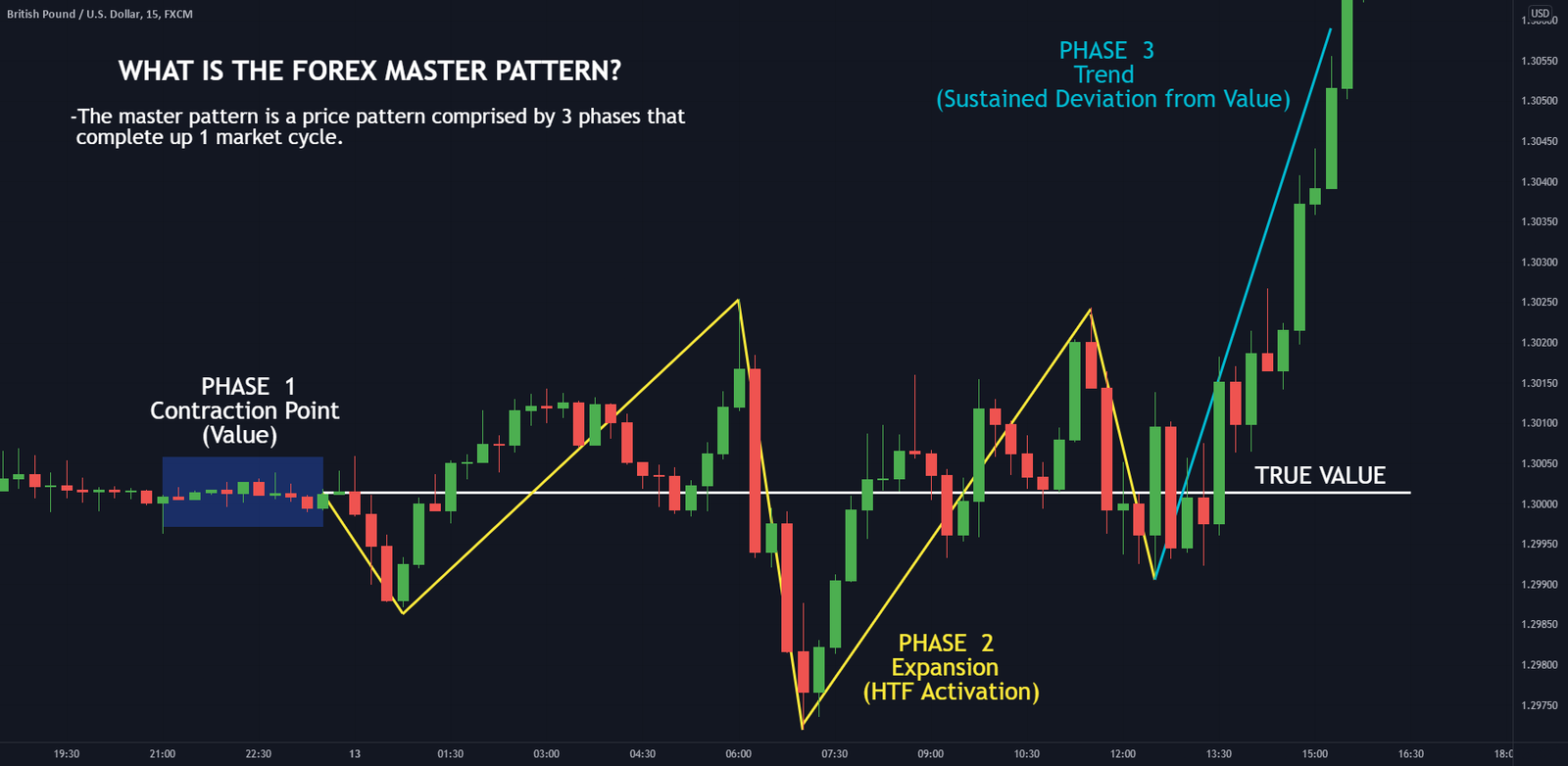
The cryptocurrency revolution has transformed from a fringe technological experiment into a global financial phenomenon that commands the attention of individual investors, institutional players, and government regulators alike. As digital assets continue their volatile yet compelling journey toward mainstream acceptance, understanding the fundamental principles driving this market becomes increasingly crucial for anyone hoping to participate successfully. The convergence of basic cryptocurrency knowledge, recognition of key market influencers, and ambitious price predictions like the $150K Bitcoin call creates a complex landscape that demands both education and strategic thinking.
For newcomers and experienced traders alike, navigating the cryptocurrency ecosystem requires a solid foundation in core concepts while simultaneously tracking the forces that propel sudden market movements. The bold prediction that Bitcoin could reach $150,000 represents more than mere speculation—it reflects underlying confidence in the asset class’s long-term trajectory and the macroeconomic factors that could drive such appreciation. This comprehensive exploration examines the essential building blocks of cryptocurrency understanding, identifies the critical market movers shaping price action, and analyzes the reasoning behind aggressive bullish forecasts that continue capturing investor imagination.
The journey into cryptocurrency investment begins with foundational knowledge but quickly expands to encompass technical analysis, fundamental research, and awareness of the broader economic forces influencing digital asset valuations. Whether you’re taking your first steps into this transformative market or seeking to deepen your existing understanding, grasping these interconnected elements provides the clarity needed to make informed decisions in an environment characterized by both extraordinary opportunity and significant risk.
Cryptocurrency Fundamentals
Cryptocurrency represents a radical reimagining of money itself, leveraging blockchain technology to create decentralized digital currencies that operate without central bank control or government intervention. At its core, cryptocurrency relies on cryptographic principles to secure transactions, control the creation of new units, and verify the transfer of assets between participants. This technological foundation distinguishes digital currencies from traditional fiat money and creates unique properties that drive both their appeal and their volatility.
Bitcoin, the pioneering cryptocurrency launched in 2009, established the template that thousands of subsequent digital assets would follow. Its creator, known by the pseudonym Satoshi Nakamoto, solved the double-spending problem that had plagued previous digital currency attempts by implementing a distributed ledger system where transactions are recorded across a network of computers rather than in a single centralized database. This innovation created digital scarcity without requiring trusted intermediaries, fundamentally altering the possibilities for internet-native money.
How Blockchain Technology Powers Digital Assets
Blockchain technology functions as an immutable, transparent ledger that records all transactions in chronological order across a distributed network of nodes. Each block contains a cryptographic hash of the previous block, creating a chain that becomes increasingly difficult to alter as more blocks are added. This structure ensures that once a transaction is confirmed and added to the blockchain, it becomes part of a permanent historical record that cannot be retroactively modified without consensus from the network majority.
The decentralized nature of blockchain networks provides resilience against single points of failure and censorship attempts. Unlike traditional financial systems, where a central authority controls transaction processing and record-keeping, cryptocurrency networks distribute these functions across thousands of independent participants. This distribution creates redundancy that protects the network from technical failures or malicious attacks targeting specific nodes or regions.
Mining or validation processes secure blockchain networks by requiring computational work or stake commitment before new blocks can be added. Bitcoin employs a Proof of Work consensus mechanism where miners compete to solve complex mathematical problems, with the winner earning the right to add the next block and receive newly created Bitcoin as a reward. Alternative mechanisms like Proof of Stake, used by Ethereum following its recent transition, require validators to lock up cryptocurrency holdings as collateral, creating economic incentives for honest behavior.
Key Cryptocurrency Categories and Their Purposes
The cryptocurrency ecosystem has evolved far beyond Bitcoin’s original vision of peer-to-peer electronic cash. Today’s digital asset landscape encompasses diverse categories serving different functions within the broader blockchain economy. Understanding these distinctions helps investors identify projects aligned with their investment thesis and risk tolerance.
Smart contract platforms like Ethereum, Solana, and Cardano enable developers to build decentralized applications that execute automatically based on predetermined conditions without requiring intermediaries. These programmable blockchains have spawned entire ecosystems of decentralized finance protocols, non-fungible token marketplaces, and blockchain-based games. The native tokens of these platforms serve multiple purposes, including paying transaction fees, securing the network through staking, and participating in governance decisions.
Stablecoins represent another critical category, providing price stability by pegging their value to external assets like the US dollar or commodities. These cryptocurrencies solve the volatility problem that limits Bitcoin’s effectiveness as a medium of exchange, enabling practical everyday transactions and serving as safe harbors during market turbulence. Tether, USD Coin, and DAI rank among the most widely used stablecoins, facilitating trillions of dollars in annual transaction volume.
Privacy coins such as Monero and Zcash prioritize transaction anonymity through advanced cryptographic techniques that obscure sender, receiver, and transaction amount information. While these features raise regulatory concerns, they fulfill legitimate privacy demands from users operating in restrictive environments or simply seeking financial confidentiality comparable to cash transactions.
Identifying Critical Market Movers in Cryptocurrency
Cryptocurrency markets respond to a complex interplay of factors ranging from technological developments and regulatory announcements to macroeconomic trends and influential personalities. Recognizing these market movers and understanding their potential impact enables investors to anticipate price movements and adjust their strategies accordingly. Unlike traditional financial markets with established valuation frameworks, cryptocurrency prices reflect a unique combination of technological promise, adoption metrics, and speculative sentiment.
Institutional adoption has emerged as one of the most powerful forces driving cryptocurrency valuations upward. When major corporations, investment funds, or financial institutions allocate capital to digital assets or integrate blockchain technology into their operations, they signal legitimacy and long-term viability to broader markets. These institutional endorsements often trigger significant price appreciation as retail investors interpret corporate adoption as validation of cryptocurrency’s mainstream potential.
Regulatory Developments and Government Policies
Government regulatory frameworks exert tremendous influence over cryptocurrency markets, with the announcement of new policies frequently causing immediate and substantial price movements. Favorable regulations that provide legal clarity and legitimacy can unlock institutional investment by addressing compliance concerns and reducing operational uncertainty. Conversely, restrictive policies or outright bans in major economies can trigger sharp selloffs as market participants reassess adoption timelines and growth potential.
The regulatory landscape for cryptocurrency remains fragmented globally, with different jurisdictions adopting divergent approaches ranging from enthusiastic embrace to hostile prohibition. The United States has pursued a piecemeal regulatory strategy with various agencies claiming jurisdiction over different aspects of the cryptocurrency ecosystem. The Securities and Exchange Commission focuses on whether specific tokens qualify as securities, while the Commodity Futures Trading Commission regulates cryptocurrency derivatives markets, and the Financial Crimes Enforcement Network addresses anti-money laundering concerns.
Recent regulatory developments have increasingly focused on stablecoin oversight, cryptocurrency taxation, and environmental considerations related to energy-intensive mining operations. Proposals requiring cryptocurrency exchanges to implement more stringent know-your-customer procedures and report transaction details to tax authorities have generated controversy within communities that value financial privacy. These regulatory pressures create ongoing uncertainty that manifests as price volatility when significant policy announcements occur.
International regulatory coordination efforts have intensified as governments recognize that cryptocurrency’s borderless nature limits the effectiveness of unilateral national policies. Organizations like the Financial Action Task Force have established guidance for cryptocurrency regulation that member nations are encouraged to implement, creating pressure toward regulatory harmonization. The outcome of these coordination efforts will significantly influence how easily cryptocurrency can achieve mainstream adoption across multiple jurisdictions.
Macroeconomic Forces and Monetary Policy
Broader economic conditions and central bank monetary policies increasingly influence cryptocurrency valuations as digital assets become integrated into traditional financial portfolios. Bitcoin’s characterization as “digital gold” and a potential inflation hedge has attracted investors seeking alternatives to fiat currencies during periods of aggressive monetary expansion. When central banks implement quantitative easing programs or maintain near-zero interest rates, some investors allocate capital to scarce digital assets as protection against currency debasement.
Inflation concerns have played a particularly significant role in driving recent cryptocurrency interest. As pandemic-era stimulus measures and supply chain disruptions produced the highest inflation rates in decades across major economies, Bitcoin’s fixed supply cap of 21 million coins became increasingly appealing to investors worried about purchasing power erosion. This narrative positioning Bitcoin as an inflation hedge has attracted both retail and institutional capital during periods of elevated price pressures.
Conversely, when central banks tighten monetary policy by raising interest rates and reducing balance sheets, risk assets including cryptocurrencies often experience downward price pressure. Higher interest rates increase the opportunity cost of holding non-yielding assets like Bitcoin, making traditional fixed-income securities more attractive on a relative basis. These dynamics demonstrate cryptocurrency’s growing correlation with broader financial markets, particularly with technology stocks and other growth-oriented investments.
The Case for Bitcoin Reaching $150,000
Bold price predictions have long characterized cryptocurrency markets, with analysts and industry figures regularly projecting dramatic appreciation based on various fundamental and technical factors. The $150K Bitcoin call represents an ambitious but not unprecedented forecast, considering Bitcoin’s historical tendency to produce exponential gains during bull market cycles. Understanding the reasoning behind such predictions provides insight into the factors that could drive substantial future appreciation.
Several fundamental catalysts could theoretically propel Bitcoin toward six-figure valuations. Limited supply dynamics create scarcity that intensifies as demand increases, with Bitcoin’s programmed issuance schedule ensuring that new supply continuously decreases through halving events that occur approximately every four years. The next halving, expected in 2024, will reduce new Bitcoin issuance from 6.25 to 3.125 coins per block, further constraining supply while demand potentially expands through continued adoption.
Institutional Adoption and Investment Infrastructure
The maturation of cryptocurrency investment infrastructure has removed many barriers that previously prevented institutional capital allocation to digital assets. The launch of regulated Bitcoin futures markets, the approval of Bitcoin exchange-traded funds in multiple jurisdictions, and the development of institutional-grade custody solutions have collectively made cryptocurrency investment more accessible to traditional financial institutions.
Major asset managers, including BlackRock, Fidelity, and Franklin Templeton, have established cryptocurrency divisions and launched investment products providing client exposure to digital assets. This institutional infrastructure buildout creates potential for substantial capital inflows as pension funds, endowments, and other institutional investors allocate small percentages of their portfolios to cryptocurrency holdings. Given the multi-trillion-dollar scale of institutional investment capital, even modest allocation percentages could produce significant demand pressure on Bitcoin’s limited supply.
Corporate treasury allocation to Bitcoin represents another potential catalyst for price appreciation. Following MicroStrategy’s pioneering decision to convert substantial corporate cash reserves into Bitcoin, other publicly traded companies have explored similar strategies as hedges against monetary inflation. If more corporations adopt Bitcoin as a treasury reserve asset, the resulting demand could meaningfully impact available supply and drive prices substantially higher.
Network Effect Dynamics and Global Adoption
Bitcoin benefits from powerful network effects where each additional user increases the value proposition for all existing participants. As more merchants accept Bitcoin for payment, more individuals hold Bitcoin as a store of value, and more financial institutions integrate Bitcoin into their service offerings, the cryptocurrency’s utility and legitimacy grow proportionally. These network effects create potential for exponential rather than linear growth as adoption reaches critical mass.
Global adoption patterns suggest significant untapped potential, particularly in developing economies where Bitcoin provides alternatives to unstable local currencies or limited banking infrastructure. Countries experiencing hyperinflation or capital controls have demonstrated particularly strong grassroots Bitcoin adoption as citizens seek to preserve wealth and maintain economic freedom. If these adoption trends accelerate and extend to additional regions, the resulting demand could support substantial price appreciation.
The Lightning Network and other layer-two scaling solutions address Bitcoin’s transaction throughput limitations, enabling instant, low-cost payments that make Bitcoin more practical for everyday transactions. As these technologies mature and user experience improves, Bitcoin’s utility as a medium of exchange could expand significantly beyond its current primary function as a store of value. Enhanced utility would strengthen the fundamental case for higher valuations by demonstrating practical use cases beyond speculative investment.
Technical Analysis and Market Cycle Patterns
Historical price patterns provide additional context for ambitious Bitcoin price targets, though past performance never guarantees future results. Bitcoin has demonstrated cyclical behavior characterized by dramatic bull markets followed by substantial corrections and extended consolidation periods. Understanding these cycles helps investors contextualize current price levels relative to historical patterns and potential future trajectories.
Previous Bitcoin bull markets have consistently produced returns that exceeded most analysts’ expectations, with price gains frequently continuing far beyond levels that seemed unsustainable during earlier stages. The 2017 bull market carried Bitcoin from under $1,000 to nearly $20,000, while the 2020-2021 cycle produced a peak around $69,000. If historical percentage gains repeat in future cycles, six-figure Bitcoin prices become mathematically plausible outcomes rather than fantastic speculation.
Stock-to-Flow Models and Valuation Frameworks
Various valuation models attempt to project Bitcoin’s fair value based on factors like scarcity, network activity, and adoption metrics. The stock-to-flow model, which calculates the ratio between existing Bitcoin supply and new issuance, has historically demonstrated correlation with price movements. According to this model’s projections, Bitcoin’s post-halving scarcity could theoretically support prices well exceeding $150,000 if historical relationships continue holding.
Metcalfe’s Law, which suggests network value grows proportional to the square of active users, provides another framework for projecting Bitcoin appreciation. As Bitcoin’s user base expands through continued adoption, network value should theoretically increase at an accelerating rate. Applied to Bitcoin, this principle suggests that substantial user growth could justify valuations far exceeding current levels.
Critics of aggressive price targets note that Bitcoin has already achieved significant market capitalization, making the percentage gains of earlier cycles increasingly difficult to replicate. A move to $150,000 would require Bitcoin’s market cap to exceed $3 trillion, placing it among the world’s most valuable assets. Skeptics question whether sufficient capital exists to drive such appreciation, particularly if macroeconomic conditions deteriorate or regulatory pressures intensify.
Strategies for Successfully Tapping Into Cryptocurrency Opportunities
Understanding cryptocurrency fundamentals and recognizing market movers provides necessary knowledge, but successful participation requires translating awareness into effective investment strategies. The volatile nature of cryptocurrency markets demands disciplined approaches that balance opportunity recognition with prudent risk management. Different investors will implement varying strategies based on risk tolerance, investment timeline, and conviction levels regarding specific cryptocurrencies or the asset class broadly.
Dollar-cost averaging represents one popular strategy for building cryptocurrency positions while mitigating timing risk. This approach involves investing fixed amounts at regular intervals regardless of price levels, ensuring exposure across various market conditions without attempting to perfectly time entry points. Over extended periods, dollar-cost averaging can produce favorable average purchase prices while removing emotional decision-making from the investment process.
Portfolio Allocation and Diversification Principles
Determining appropriate cryptocurrency allocation within broader investment portfolios requires an honest assessment of risk tolerance and financial circumstances. Financial advisors traditionally recommend limiting speculative investments to percentages that won’t materially harm overall financial well-being if lost entirely. For cryptocurrency, this might mean allocating 5-10% of investment portfolios for moderate risk tolerance or potentially higher percentages for younger investors with longer time horizons and greater risk capacity.
Diversification within cryptocurrency holdings can reduce concentration risk while maintaining exposure to the asset class’s overall growth potential. Rather than concentrating entirely in Bitcoin, investors might allocate portions to Ethereum and carefully selected altcoins that offer exposure to specific blockchain use cases or technological innovations. This diversification should be balanced against the reality that Bitcoin and Ethereum represent the most established digital assets with the deepest liquidity and longest track records.
Security considerations are paramount when holding cryptocurrency, as the irreversible nature of blockchain transactions means lost or stolen funds typically cannot be recovered. Hardware wallets that store private keys offline provide robust security for long-term holdings, while reputable exchanges with strong security track records may serve convenience needs for actively traded positions. Implementing multi-factor authentication, maintaining separate holdings for trading versus long-term investment, and never sharing private keys or seed phrases constitute essential security practices.
Conclusion
The cryptocurrency ecosystem continues evolving at a remarkable pace, presenting both extraordinary opportunities and significant challenges for investors seeking exposure to this transformative asset class. Mastering cryptocurrency fundamentals provides the foundation for understanding how blockchain technology creates value and why digital assets have captured such widespread attention. Recognizing the key market movers that drive price action enables more strategic decision-making and better anticipation of potential volatility triggers.
The ambitious $150K Bitcoin prediction reflects genuine optimism rooted in supply scarcity, institutional adoption trends, and historical price cycle patterns, though substantial uncertainty surrounds any long-term price forecast. Whether Bitcoin ultimately reaches such valuations depends on numerous factors, including regulatory developments, macroeconomic conditions, technological advancement, and continued adoption across diverse user segments. Investors should approach such predictions as possibilities rather than certainties, maintaining balanced perspectives that acknowledge both upside potential and downside risks.
Successfully tapping into cryptocurrency opportunities requires combining knowledge with discipline, enthusiasm with caution, and conviction with flexibility. The market rewards those who invest time in understanding underlying technologies and market dynamics while maintaining realistic expectations about volatility and risk. As cryptocurrency continues its journey from experimental technology to an established asset class, informed participation positions investors to potentially benefit from this ongoing financial revolution while managing the inherent uncertainties that accompany any emerging market.
FAQs
Q: What is the most important cryptocurrency concept for beginners to understand?
The most critical concept for cryptocurrency beginners is blockchain technology itself and how it enables decentralized, trustless transactions without intermediaries. Understanding that cryptocurrency transactions are recorded on distributed ledgers secured through cryptography and consensus mechanisms provides the foundation for comprehending why digital assets have value and how they differ fundamentally from traditional money. This knowledge helps beginners evaluate different cryptocurrencies and recognize genuine innovation versus marketing hype.
Q: Which factors have the greatest influence on cryptocurrency prices?
Cryptocurrency prices respond most dramatically to regulatory announcements, institutional adoption developments, macroeconomic conditions, including inflation and interest rates, technological upgrades or security incidents, and statements from influential figures in the industry. Supply dynamics, including Bitcoin halving events, also significantly impact prices over medium to long-term periods. Unlike traditional assets with cash flow-based valuations, cryptocurrency prices reflect speculative assessment of future adoption and utility, making sentiment-driven factors particularly powerful.
Q: Is a $150,000 Bitcoin price realistic or merely speculation?
A $150,000 Bitcoin price represents an ambitious but theoretically achievable target based on historical cycle patterns, scarcity dynamics, and potential institutional adoption trajectories. However, substantial uncertainty surrounds any long-term price prediction given cryptocurrency’s volatility and dependence on unpredictable factors like regulation and macroeconomic conditions. Investors should view such predictions as possibilities that could materialize under favorable circumstances rather than guaranteed outcomes, maintaining balanced portfolios that can withstand significant downside scenarios.
Q: How much should someone invest in cryptocurrency as a beginner?
Beginners should invest only amounts they can afford to lose completely without impacting essential financial needs or long-term goals. Financial advisors typically recommend limiting cryptocurrency to 5-10% of investment portfolios for those with moderate risk tolerance, though individual circumstances vary considerably. Starting with smaller amounts allows beginners to gain experience with cryptocurrency custody, transaction processes, and emotional responses to volatility before committing larger capital. Gradually increasing exposure as knowledge and comfort grow represents a prudent approach.
Q: What security measures are essential when holding cryptocurrency?
Essential cryptocurrency security measures include using hardware wallets for significant long-term holdings, implementing strong, unique passwords and two-factor authentication on all exchange accounts, never sharing private keys or seed phrases with anyone, verifying wallet addresses carefully before transactions, maintaining backup copies of seed phrases in secure physical locations, and keeping software wallets updated with the latest security patches. Additionally, using reputable exchanges with strong security track records and insurance for custodied funds, diversifying storage across multiple wallets, and remaining vigilant against phishing attempts constitute critical security practices.










